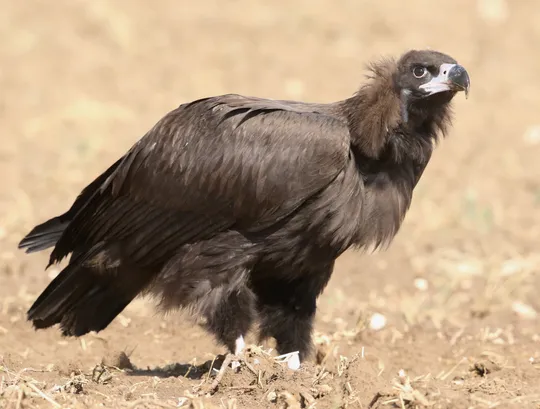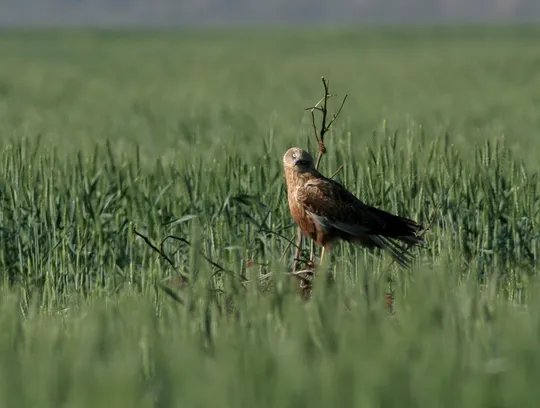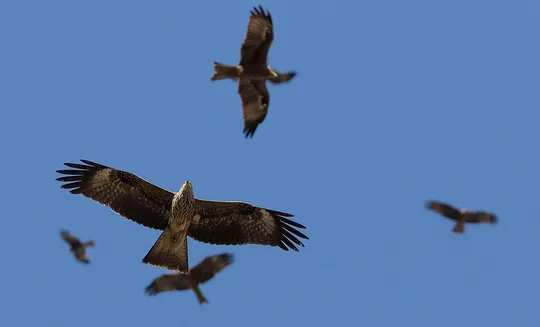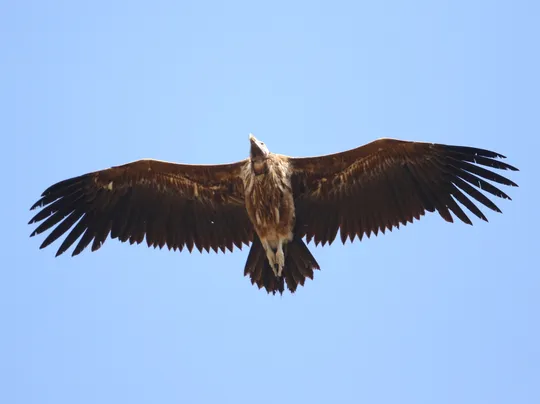Gypaetus barbatus
 Regionally Extinct
Regionally Extinct
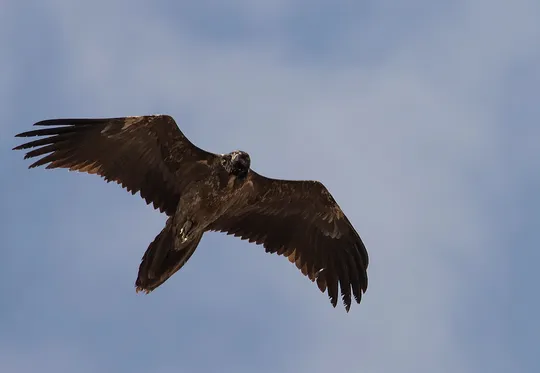
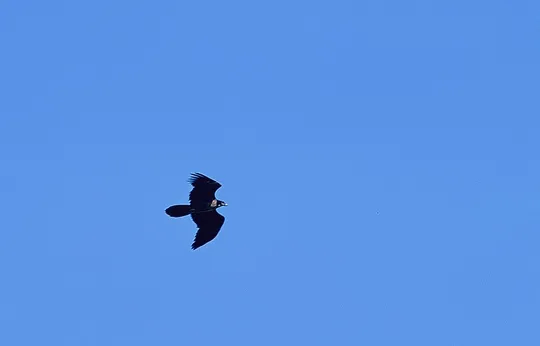
| Habitats | Desert Cliffs, Mediterranean Cliffs |
|---|---|
| Presence In Israel | Resident |
| Breeding In Israel | Bred in the past |
| Migration Types | Resident |
| Zoographical Zones | Alpine, Mediterranean, Irano-Turanian, Saharo-Arabian, Sudani |
| Landscape Types | Mountainous, Cliffs |
| Vegetation Densities | Low |
| Nest Locations | Cliffs |
| Diet Types | Carrion |
| Foraging Grounds | Ground |
| Body Sizes | Large (over 1000g) |
| Threat Factors | Pesticide Poisoning, Lead Poisoning, Direct disturbance from human activity, Hunting and trapping |
The Bearded Vulture is a large impressive carrion feeder with long pointed wings and a long wedge-shaped tail. Its English name refers to the short tuft of “beardlike” feathers that protrudes downwards from the base of its beak. The Bearded Vulture is an aerobat and maneuvers remarkably easily in flight relative to its size. This allows it to soar and glide along cliffs and mountainsides, and it is among the few raptors that nest even on the highest peaks, e.g. in the Himalayas. The Bearded Vulture also has unusual eating habits – it specializes in breaking bones by dropping them from heights onto rock surfaces below. It has a large gape that allows it to swallow large bones whole. Unlike most vultures, it also hunts live prey, and even large mammals, which it kills by dropping them from cliffs into precipices.
The Bearded Vulture nested in the Galilee in the nineteenth century (Tristram 1867). Until the 1950s, 5-10 pairs nested in Eastern Samaria, the Judean Desert, the Negev and the Eilat Mountains (Sela 1975, Frumkin & Man 1984, Paz 1986, Shirihai 1996). The Negev and Judean Desert populations declined in the 1970s and 1980s. The last verified breeding was recorded in the Judean Desert in 1981 (Bahat 1986). Currently the species is an extremely rare vagrant in Israel. A few vagrants (juveniles and immatures) occur in the Golan, Judean Desert and the Negev, and they probably originate in populations breeding in Turkey and Eastern Europe.
As part of “Spreading Wings over Israeli Raptors”, a joint project of the Israel Electric Corporation, the INPA and the SPNI, there were attempts to establish a Bearded Vulture breeding nucleus that was to be part of the European breeding nucleus. In the mid-1990s, two pairs were brought to Israel, but the attempts at breeding them failed and the surviving birds were returned to Europe.
There is a low probability of the Bearded Vulture returning to breed in Israel. The species has received a low priority for active management and reintroduction (Hatsofe & Mayrose 2015, Master Plan for Raptor Conservation in Israel) for the following reasons:
Most of the reasons for extinction are still present and very relevant.
The difficulty in breeding the species in captivity and its low natural reproductive rate.
The Bearded Vulture reproductive capacity is low and it reaches sexual maturity only at the age of 5-6 years. Its breeding cycle lasts for close to a year, and only one chick, at the most, fledges. These facts, along with its extreme sensitivity to human disturbance and habitat modification have led to its extinction in many countries, including Israel and the entire Middle East.
- הצופה, א. ומירוז, א. 2015. תכנית אב לשימור העופות הדורסים בישראל. מסמך פנימי של רשות הטבע והגנים.
- פז, ע. 1986. עופות. מתוך אלון, ע. (עורך), החי והצומח של ארץ ישראל. כרך 6. הוצאת משרד הביטחון, ישראל.
- Shirihai, H., 1996. The Birds of Israel. Academic Press, London.
- Symes, A. 2013. Species generation lengths. Unpublished, BirdLife International.
- Species page at Birdlife International
Distribution maps
The maps presented here provide visual information on the distribution of species in Israel from the past and present, and the changes in occupancy and breeding density during the comparison period. For further reading
Relative Abundance 2010-2020
Breeding density values in the current decade as determined from experts' opinion and observations from databases.
| Data Missing | Sporadic | Limited Sites | Low Density | High Density |
|---|---|---|---|---|
| 8 | 12 | 12 | 21 | 19 |
Relative Abundance 1980-1990
Density values based primarily on the book The Birds of Israel (Shirihai 1996).
| Data Missing | Sporadic | Limited Sites | Low Density | High Density |
|---|---|---|---|---|
| 5 | 14 | 14 | 17 | 22 |
Occupancy 1990-2020
The map shows differences in the species breeding distribution between the 1980's breeding map and the current weighted breeding evaluation. Negative value - species previously bred in the grid and is not presently breeding; positive value - species has not previously bred in the grid and is currently breeding.
| Data Missing | No Change | Occupancy Increase | Occupancy Decrease |
|---|---|---|---|
| 6 | 35 | 1 | 9 |
Change in Relative Abundance 1990-2020
The map shows the changes in the relative abundance of a species in each of the distribution grids between the breeding map of the 1980s and the weighted current breeding evaluation. Negative values - decline in abundance; positive values - increase in abundance; zero - no change in abundance.
| 80 to 100 | 50 | 20 to 30 | No Change | 30- to 20- | 50- | 100- to 80- | Data Missing |
|---|---|---|---|---|---|---|---|
| 0 | 4 | 2 | 22 | 12 | 14 | 11 | 16 |
| Rarity | |
|---|---|
| Vulnerability | |
| Attractiveness | |
| Endemism | |
| Red number | |
| Peripherality | |
| IUCN category | |
| Threat Definition according to the red book |
